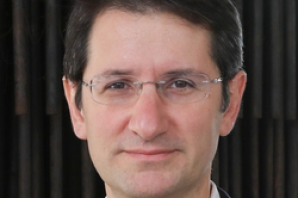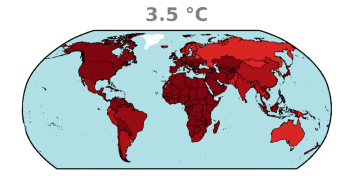Are climate goals going up in smoke?

Amid soaring energy prices, people across the northern hemisphere are scrambling to find ways to keep warm as the chilly autumn evenings draw-in. Wood-burning appliances and pellet stoves may seem like a good way of keeping energy bills down, but they have harmful hidden costs. ERC grantee Athanasios Nenes is unraveling how smoke particles from biomass burning interact with clouds and affect rainfall, the climate and public health.
Clouds are formed upon pre-existing airborne particles, also known as aerosols. Without particles in the air, there would be no clouds in the sky. Tiny airborne particles help cloud water droplets and ice crystals form. They play a key role in the climate system – from rain and keeping the earth cool from the sun to fertilizing areas with nutrients. The type of cloud formed can vary significantly depending on the number of particles, their size and their chemical characteristics.
Athanasios Nenes is studying particles that come from biomass burning, both from wildfires that occur during the summer and from wood-burning appliances during wintertime in densely populated urban areas in the Mediterranean. With wildfires increasing in intensity and frequency worldwide and wood burning prevalent this winter, aerosol science has never been so crucial.
‘Chemical fingerprints’
Although known to be a contributor to air pollution, the exact global impact of particles from biomass burning is still unclear, largely because of the difficulty to track them after a few days of being airborne. Nenes and his team are working on identifying ‘chemical fingerprints’ that remain in smoke particles for longer than those that have been measured so far in an effort to track them throughout their lifetime. The question is whether smoke from biomass burning becomes more toxic over time and whether the warming impact of smoke remains in the atmosphere, possibly accelerating climate change.
In their search for clues, Nenes and his team have developed new markers of biomass burning with an atmospheric lifetime that exceeds the current limitation of about a day. One such marker relates to the presence of very large molecules that absorb light. The scientist have been successful in identifying such persistent warming molecules and lignin (all of which take a long time to break down), which they believe may be linked – and provide ways to identify smoke long after it has been emitted.
When smoke stays in the atmosphere, it gets exposed to oxidants, which transform it chemically. Transformed smoke is much more harmful than original smoke, even when diluted in the wind and no longer “smells”. Nenes and his team have found that this transformation not only takes place during the day when sunlight provides energy for oxidation. Rapid oxidation can also occur at night in the presence of other atmospheric pollutants like NOx (oxides of nitrogen) and ozone, which generates an ‘oxidation cocktail’. Furthermore, the toxicity varies with wood type. “Olive trees are ubiquitous throughout the Mediterranean, and initial indications show that they generate smoke, which might be even more toxic than from other types”, Nenes says.
Seeking dusty skies
Each time a dust cloud brews; there is a flurry of activity across the team’s research sites in downtown Athens, Crete and their main site at The Center of Studies on Air quality and Climate Change in Patras. Plumes of pollution are captured before, during and as they wane. The three sites provide different airy snapshots of these events. Patras captures agricultural wood burning following the harvesting of olives. Athens offers data from big city life with wood burning during the winter when its inhabitants are warming their homes. Crete is acting as a receptor site for wildfires and wood burning further away – providing a good picture of long-term, ‘aged’ particles at their end-point in terms of oxidation.
While the observations are based in the Mediterranean, PyroTRACH’s scope is global as the processes being studied occur worldwide. “The collected data can be put in models to get global estimates of atmospheric particulate matter,” says Nenes.
Apart from these research sites, Nenes co-organized the CALISTHO campaign and together with a team of international scientists worked on the top of Mount Helmos at the heart of the Peloponnese throughout the autumn of 2021 and winter of 2022. With their measuring station located at an altitude of 2.300 meters, the scientists were able to observe how two distinct layers of air interact – a lower one, where all the anthropogenic pollution accumulates, and an upper one, where the air is much cleaner – with clouds in the region.
The sensing instrumentation lies at a crossroad of different air masses coming from the continent, the Sahara desert, and from long-range biomass burning. Those different volumes of air provided the team with a better picture of both less-aged and aged particles as well as how ‘load’ influences cloud formation and precipitation in a changing climate.
In the wind
Wood burning remains a primary source of particulate matter and may further affect climate change. While there are all kinds of pollution, sitting in a smoky environment for a few days can be the equivalent of inhaling all the carcinogenic compounds one breaths in for the rest of the year.
“The cancer risk from exposure to poor air quality is already above the levels that Europe consider safe,” warns Nenes. Despite this, biomass burning is seen as a renewable energy source under the European Green Deal. Another reason comes down to perception: burning wood is perceived to be a natural activity, which humankind have been doing for over a million years - the lure of a warming fireplace with glowing logs is hard to give up.
Yet cycles of heavy rain in many places during the spring followed by drought during the summer due to climate change is providing continuous fuel generation, meaning that wildfires are going to continue to burn from year to year. “Measures like eco-design regulations for domestic biomass appliances as well as targeted “no burn” days to lower emissions are not going to be enough to protect people and the environment from the effects of smoke,” states Nenes.
Biography
Athanasios Nenes is Professor of Atmospheric Processes and heads the Laboratory of Atmospheric Processes and their Impacts (LAPI) at the École Polytechnique Fédérale de Lausanne. He is an affiliate researcher of the Institute of Chemical Engineering Science at the Foundation for Research and Technology Hellas in Patras, where he co-directs the Center of Studies on Air quality and Climate Change (C-STACC). His research focuses on aerosols and clouds, and their impacts on climate, health and ecosystems. Nenes is a member of the Academia Europaea. He has received numerous distinctions, including the Copernicus Medal 2022.






